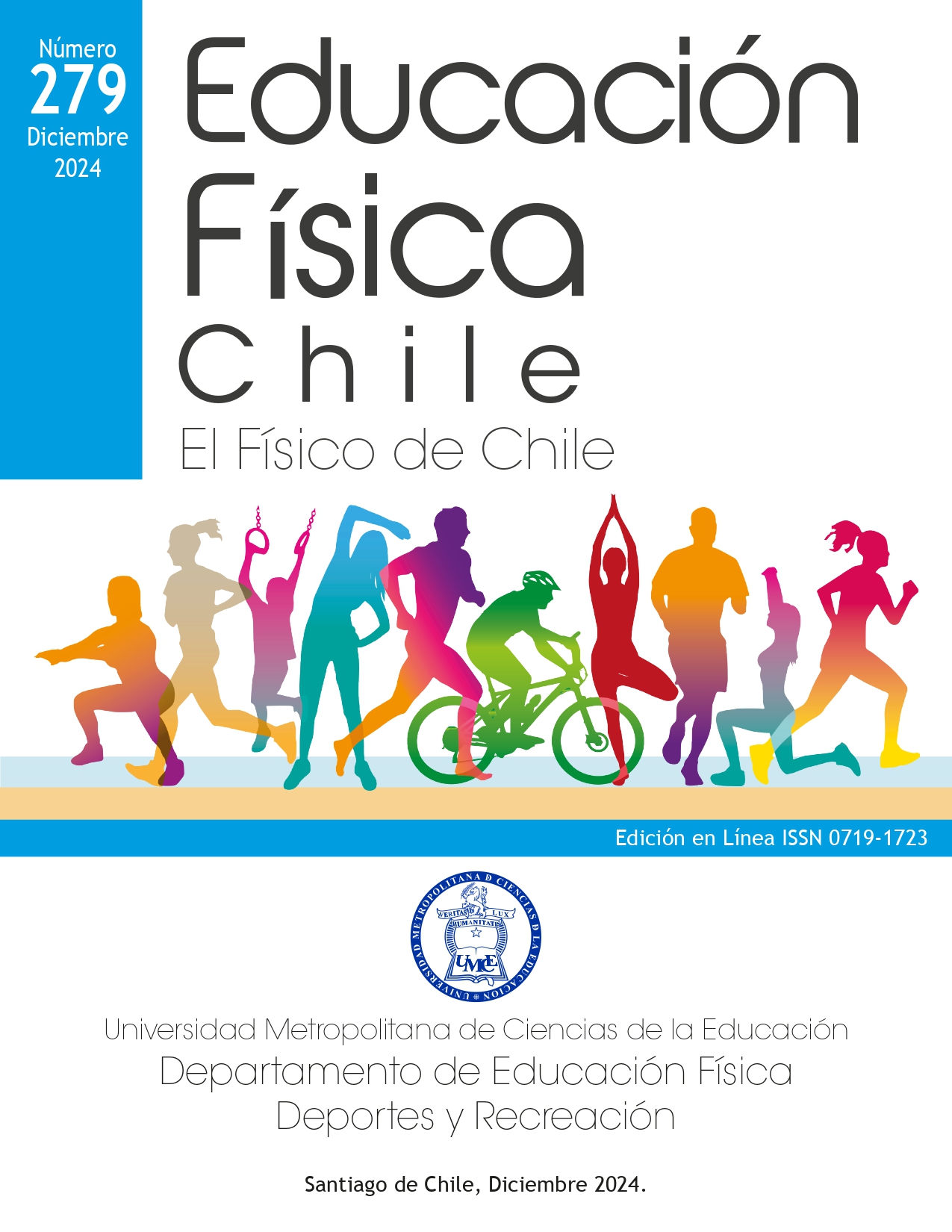Main Article Content
Oct 3, 2024
Abstract
The purpose of this research was to investigate the factors that influence the absence of physical education teachers in kindergartens in the Metropolitan Region. For this purpose, a virtual questionnaire was applied by means of Google Forms in different preschool educational establishments. The kindergartens consulted belong to public and private agencies and/or administrations. The results showed that 64% of public institutions do not have physical education teachers, while 36% that do have physical education teachers belong to private institutions. The main factor affecting the presence of physical education teachers in kindergartens is insufficient funding. It is concluded that the State should increase its investment in kindergarten education and it is suggested that Decree 352 be modified to enable physical education teachers to work in kindergartens, in order to favor the psychomotor development of children.

This work is licensed under a Creative Commons Attribution-NonCommercial-NoDerivatives 4.0 International License.
References
Ajuriaguerra, J. (1978). Manual de psiquiatría infantil. Científico Médica.
Arnaboldi de Camargo, V. (2010). Estudio comparativo del nivel de rendimiento motor entre los profesionales de preescolar y los no practicantes de actividad física sistemática. Universidad de Rio Grande do Sul: Escuela de Educación física.
Bruner, J. (1979). El desarrollo del niño. Morata.
Cratty, B. J. (1990). Desarrollo perceptual y motor en los niños. Paidós.
Da Fonseca, V. (1984). Filogénesis de la motricidad. García Núñez.
Da Fonseca, V. (1988). Ontogénesis de la motricidad. García Núñez.
Decreto 352 (2004). Reglamenta ejercicio de la función docente. 12 marzo. D.O. 06.03.2018.
Freud, S., (1968). Obras completas, 3 vol. Biblioteca Nueva.
Gallahue, D. y McClenaghan, B.(1985). Movimientos fundamentales. Panamericana.
Gesell, A. (1958). Psicología evolutiva de 1 a 16 años, vol. II. Paidós.
Gil-Madrona, P., Contreras-Jordán, O. & Gómez-Barreto, I. (2008). Habilidades motrices en la infancia y su desarrollo desde una medición física animada. Revista Iberoamericana de Educación, 47, 71-96.
Guilmain, E. y Guilmain G. (1981). Evolución psicomotriz desde el nacimiento a los 12 años. Médica y Técnica.
Hernández, R., Fernández, C., & Baptista, P. (2014). Metodología de la investigación McGraw-Hill.
Jackson, K., Johnson, R. & Persico, C. (2015). The effects of school spending on educational and economic outcomes: evidence from school finance reforms. NBER Working Paper No. 20847 January 2015.
Lapierre, A. & Aucouturier, B. (1985). Simbología del movimiento. Científico Médica.
Le Boulch, J. (1981). La educación por el movimiento en la edad escolar. Paidós.
LOGSE (1990). Ley Orgánica Constitucional de ordenación general del sistema educativo. Boletín Oficial del Estado del 4 de octubre de 1990.
Luarte, C.; Poblete, F. y Flores, C. (2014). Nivel de desarrollo motor grueso en preescolares sin intervención de profesores de Educación física. Concepción, Chile. Revista Ciencias de la Actividad Física UCM, 15(1), 7-16.
Maureira, F. (2017). Estadística para Educación física. Bubok Publishing S.L.
Ministerio de Educación de Chile. (2023). Evidencias 58. El sistema educativo chileno en el contexto internacional: un análisis a partir de Education al a Glance 2023. Noviembre 2023.
Moreno, F. y Herrán, A. (2017), Conocimientos Disciplinares y Pedagógicos de las Educadoras de Párvulos en Chile. Profesorado. Revista de Currículum y Formación de Profesorado, 21(1), 233-251
Organización Mundial de la Salud (2022). Actividad física. https://www.who.int/es/news-room/fact-sheets/detail/physical-activity.
Piaget, J. (1969). Biología y conocimiento. Siglo XXI.
Piaget, J. (1968). Seis estudios de psicología. Seix-Barral.
Renzi, G. (2009). Educación física y su contribución al desarrollo integral de los niños en la primera infancia. Revista Iberoamericana de Educación, 50, 1-14.
Subsecretaría de Educación Parvularia (2018). Bases Curriculares Educación Parvularia. Santiago de Chile, Ministerio de Educación.
UNESCO. (1978). Carta Internacional de la Educación física, La Actividad Física y el Deporte. París, Francia.
UNESCO. (2015). Educación física de calidad. Guía para los responsables políticos.
Vayer, P. (1973). El niño frente al mundo. Científico Médica.
Wallon, H. (1980). La evolución psicológica del niño. Crítica.



